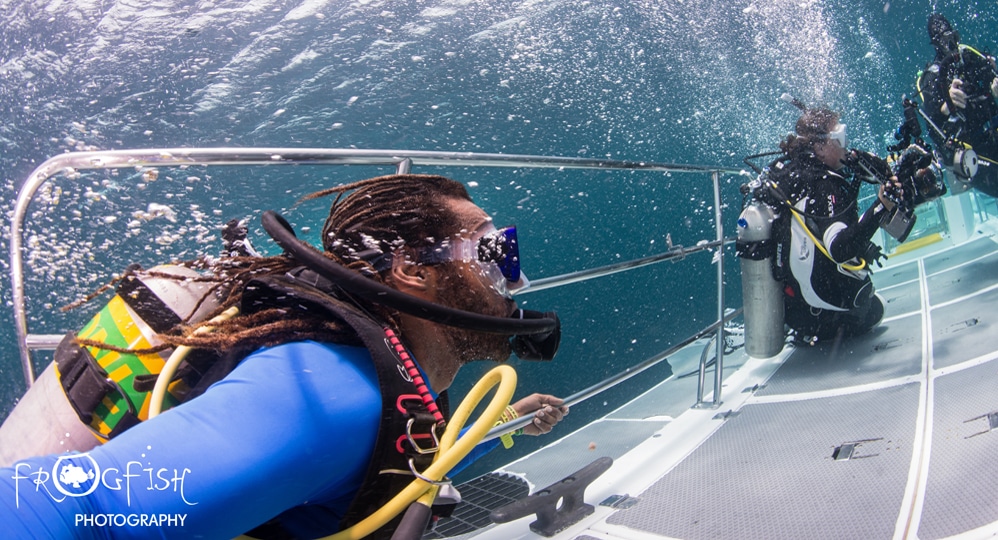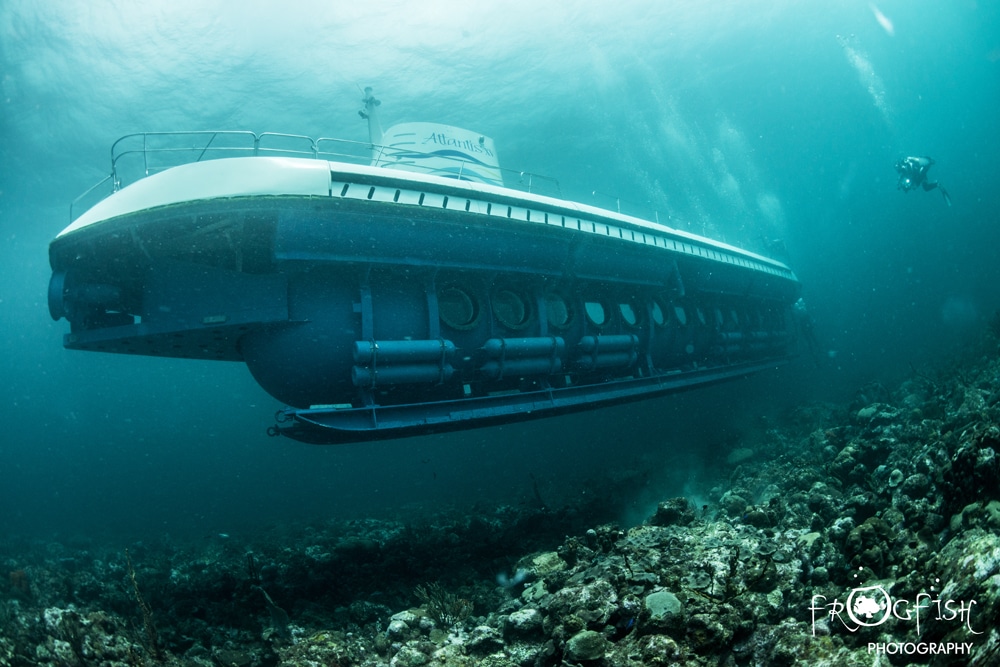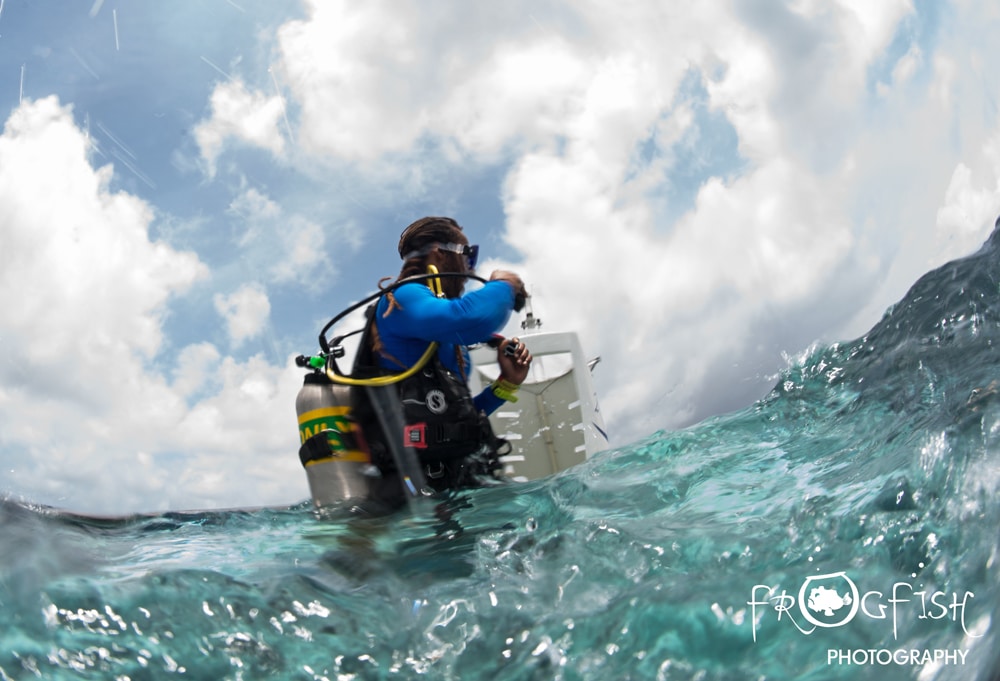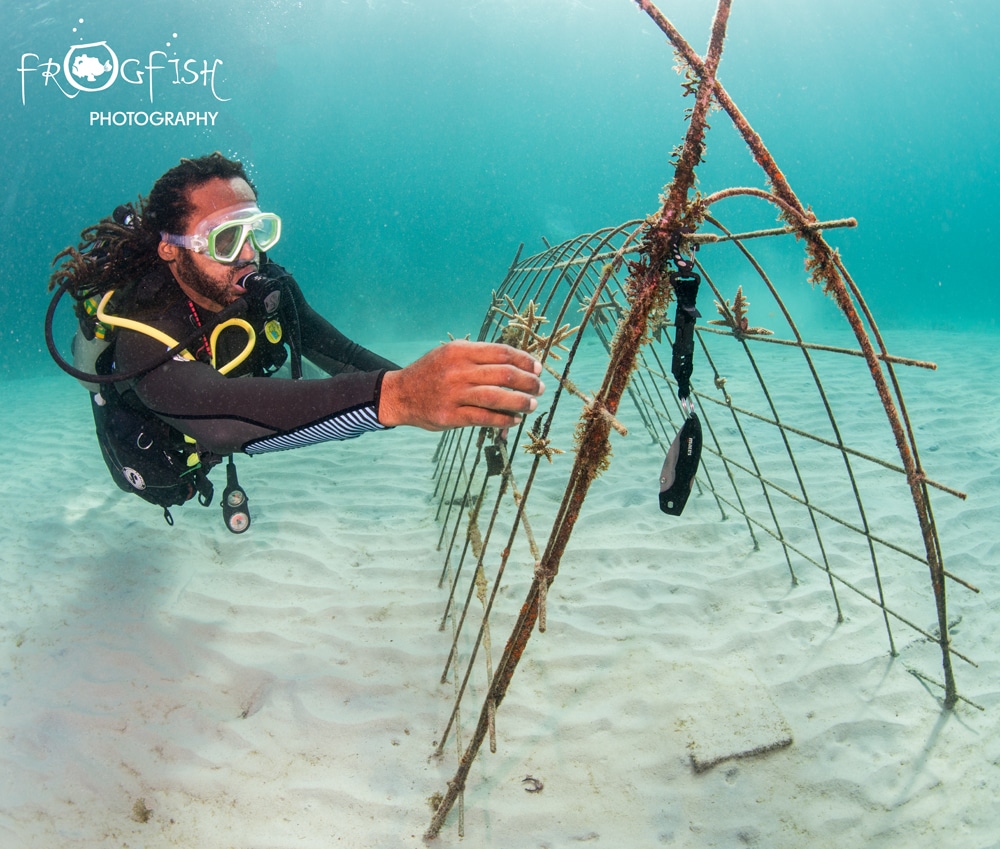News
Dive Fest Diaries – Day 3 (Watch Video)

Each year the magical, Caribbean island of Barbados holds a festival to celebrate scuba diving, free diving and marine conservation. This year, Nick and Caroline went along to see what it was all about…
Friday 6th July: Day 3
The third day of Dive Fest Barbados saw us diving with our old friends from Barbados Blue. A warm welcome from Andre, Christie and Keira at the dive shop was a great start to the day, catching up on all that we had been up to since we last saw them. Andre had a glint in his eye, which is not uncommon, but we knew he had something up his sleeve for the day’s diving. He had decided to take us out on our own boat, with just the three of us from Scubaverse, and he and Christie from Barbados Blue. “How do you fancy diving on a submarine?” says Andre.
It turns out that Atlantis Submarines Barbados run submarine tours off the reef and we had been given permission to dive alongside the sub as it hovered above the reef. We jumped at the chance, and as we dived down to greet it, we saw a group of local school children pressed up against the windows. They were being introduced to the wonderful underwater world that surrounds their island, and we were there to add to the fun. Nick and Andre went along each window, waving and bumping fists against the glass. It was smiles and laughter all round.
But our adventures were not over for the day. Between dives, Andre had been on the phone and radio while we basked in the sunshine. Suddenly there was a cheer from Andre – we had been given permission to “ride” the submarine to the bottom of the sea! Yes, you heard me right – it was going to come to the surface to take on a new group of guests. Then we were going to stand on the top, hold on, and ride it to a depth of around 20m. Never have we done anything quite as mad as this before; truly bonkers!!
We started with a serious briefing before we crossed to the Atlantis. It was an epic ride. As the sub started to descend we had to hold on to the railing tight, as the water rushed up past us. We were in an ocean of bubbles, holding on with one hand, trying to take photos with the other, along with equalizing! Soon we were able to let go of the railing and just hang out on the deck as the descent became easier once we were fully submerged. The bubbles died down and we could take some photos, finally swimming off the top and around to wave at and thank the captain, as well as entertaining the visitors inside the sub. You can watch the video below:
It was a dive we will talk about for a very long time to come! After a pause for breath we tied up the boat, and stopped for some lunch at The Beach House, with plenty of talk of what it was like to ride a submarine to the bottom of the ocean. Our post lunch dive was to go and see the coral nursery that the team from Barbados Blue have been nurturing and to see Andre and Christie (who is a coral biologist) transplant staghorn coral from the nursery to the reef.
To top off an amazing day – with it being a Friday – it was time to head to the famous Friday night “Fish Fry” at Oistins. Here huge crowds gather to enjoy the food, music and entertainment that kicks off every weekend in Barbados.
Want to join in on all the fun at Dive Fest Barbados 2019 – put the dates in your diary: 3rd to 7th July 2019
barbados.atlantissubmarines.com
Equipment used:
- Nikon D800, Nauticam housing, INON Strobes
- Olympus OMD EM-1 mkII, Nauticam housing, INON Strobes
- Paralenz Dive Camera
Gear News
Scubapro Free Octopus Promotion 2024

Free Octopus with every purchase of a SCUBAPRO regulator system
Just in time for the spring season, divers can save money with the FREE OCTOPUS SPRING PROMOTION! Until July 31st SCUBAPRO offers an Octopus for free
with every purchase of a regulator system!
Get a free S270 OCTOPUS with purchase of these combinations:
MK25 EVO or MK19 EVO with A700
MK25 EVO or MK19 EVO with S620Ti
MK25 EVO or MK19 EVO with D420
MK25 EVO Din mit S620Ti-X
Get a free R105 OCTOPUS with purchase of the following combinations:
MK25 EVO or MK19 EVO with G260
MK25 EVO or MK17 EVO with S600
SCUBAPRO offers a 30-year first owner warranty on all regulators, with a revision period of two years or 100 dives. All SCUBAPRO regulators are of course certified according to the new European test standard EN250-2014.
Available at participating SCUBAPRO dealers. Promotion may not be available in all regions. Find an authorized SCUBAPRO Dealer at scubapro.com.
More information available on www.scubapro.com.
Blogs
Northern Red Sea Reefs and Wrecks Trip Report, Part 3: The Mighty Thistlegorm

Jake Davies boards Ghazala Explorer for an unforgettable Red Sea diving experience…
Overnight, the wind picked up, making the planned morning dive a bit bumpy on the Zodiacs to the drop point on Thomas Reef. There, we would dive along the reef before descending through the canyon and then passing under the arch before ascending the wall with a gentle drift. The site provided great encounters with more pelagic species, including shoals of large barracuda, tuna, and bigeye trevally.
Once back on the boat, it was time to get everything tied down again as we would head back south. This time, with the wind behind us, heading to Ras Mohammed to dive Jackfish Alley for another great gentle drift wall dive before then heading up the coast towards the Gulf of Suez to moor up at the wreck of the Thistlegorm. This being the highlight wreck dive of the trip and for many onboard, including myself, it was the first time diving this iconic wreck. I had heard so much about the wreck from friends, and globally, this is a must on any diver’s list. Fortunately for us, there was only one other boat at the site, which was a rarity. A great briefing was delivered by Ahmed, who provided a detailed background about the wreck’s history along with all the required safety information as the currents and visibility at the site can be variable.

Kitting up, there was a lot of excitement on deck before entering the water and heading down the shoreline. Descending to the wreck, there was a light northerly current which reduced the visibility, making it feel more like the conditions that can be found off the Welsh coast. At 10m from the bottom, the outline of the wreck appeared as we reached the area of the wreck which had been bombed, as our mooring line was attached to part of the propeller shaft. Arriving on deck, instantly everywhere you looked there were many of the supplies which the ship was carrying, including Bren Carrier tanks and projectiles that instantly stood out.

We headed around the exterior, taking a look at the large propeller and guns mounted on deck before entering the wreck on the port side to take a look in the holds. It was incredible to see all the trucks, Norton 16H, and BSA motorcycles still perfectly stacked within, providing a real snapshot in time.

Overall, we had four dives on the Thistlegorm, where for all of the dives we were the only group in the water, and at times, there were just three of us on the whole wreck, which made it even more special, especially knowing that most days the wreck has hundreds of divers. Along with the history of the wreck, there was plenty of marine life on the wreck and around, from big green turtles to batfish, along with shoals of mackerel being hunted by trevally. Some unforgettable dives.

The final leg of the trip saw us cross back over the Suez Canal to the Gobal Islands where we planned to stay the night and do three dives at the Dolphin House for the potential of sharing the dive with dolphins. The site, which included a channel that was teeming with reef fish, especially large numbers of goatfish that swam in large shoals along the edge of the reef. These were nice relaxing dives to end the week. Unfortunately, the dolphins didn’t show up, which was okay as like all marine life they are difficult to predict and you can’t guarantee what’s going to be seen. With the last dive complete, we headed back to port for the final night where it was time to clean all the kit and pack before the departure flight the next day.

The whole week from start to finish on Ghazala Explorer was amazing; the boat had all the facilities you need for a comfortable week aboard. The crew were always there to help throughout the day and the chefs providing top quality food which was required after every dive. The itinerary providing some of the best diving with a nice mixture of wreck and reef dives. I would recommend the trip to anyone, whether it’s your first Red Sea liveaboard in the Red Sea or you’re revisiting. Hopefully, it’s not too long before I head back to explore more of the Red Sea onboard Ghazala Explorer.

To find out more about the Northern Red Sea reef and wrecks itineraries aboard Ghazala Explorer, or to book, contact Scuba Travel now:
Email: dive@scubatravel.com
Tel: +44 (0)1483 411590
Photos: Jake Davies / Avalon.Red
-

 News3 months ago
News3 months agoHone your underwater photography skills with Alphamarine Photography at Red Sea Diving Safari in March
-

 News3 months ago
News3 months agoCapturing Critters in Lembeh Underwater Photography Workshop 2024: Event Roundup
-

 Marine Life & Conservation Blogs2 months ago
Marine Life & Conservation Blogs2 months agoCreature Feature: Swell Sharks
-

 Blogs2 months ago
Blogs2 months agoMurex Resorts: Passport to Paradise!
-

 Blogs2 months ago
Blogs2 months agoDiver Discovering Whale Skeletons Beneath Ice Judged World’s Best Underwater Photograph
-

 Gear Reviews3 months ago
Gear Reviews3 months agoGear Review: Oceanic+ Dive Housing for iPhone
-

 Marine Life & Conservation2 months ago
Marine Life & Conservation2 months agoSave the Manatee Club launches brand new webcams at Silver Springs State Park, Florida
-

 News3 months ago
News3 months agoWorld’s Best Underwater Photographers Unveil Breathtaking Images at World Shootout 2023



















